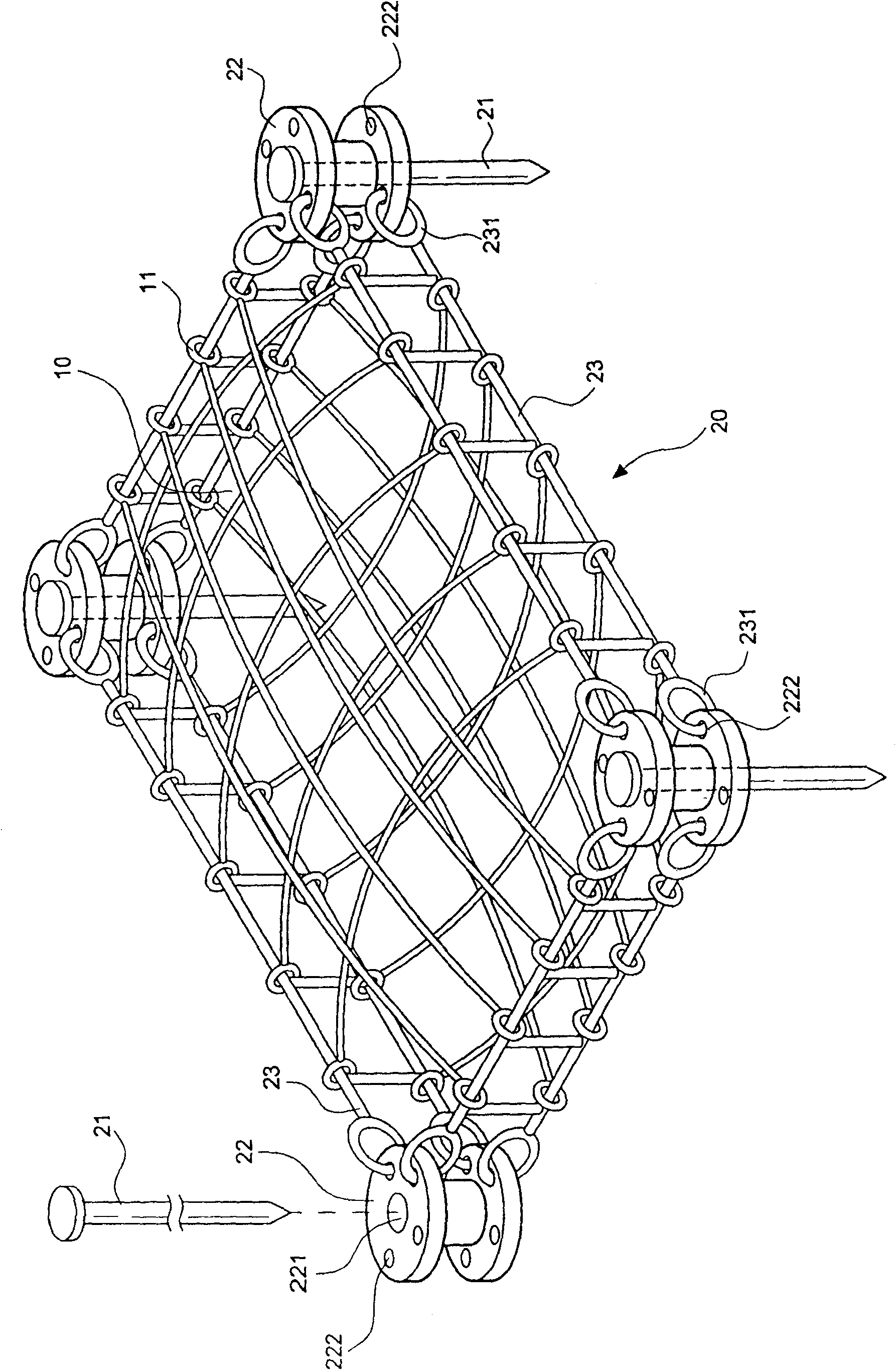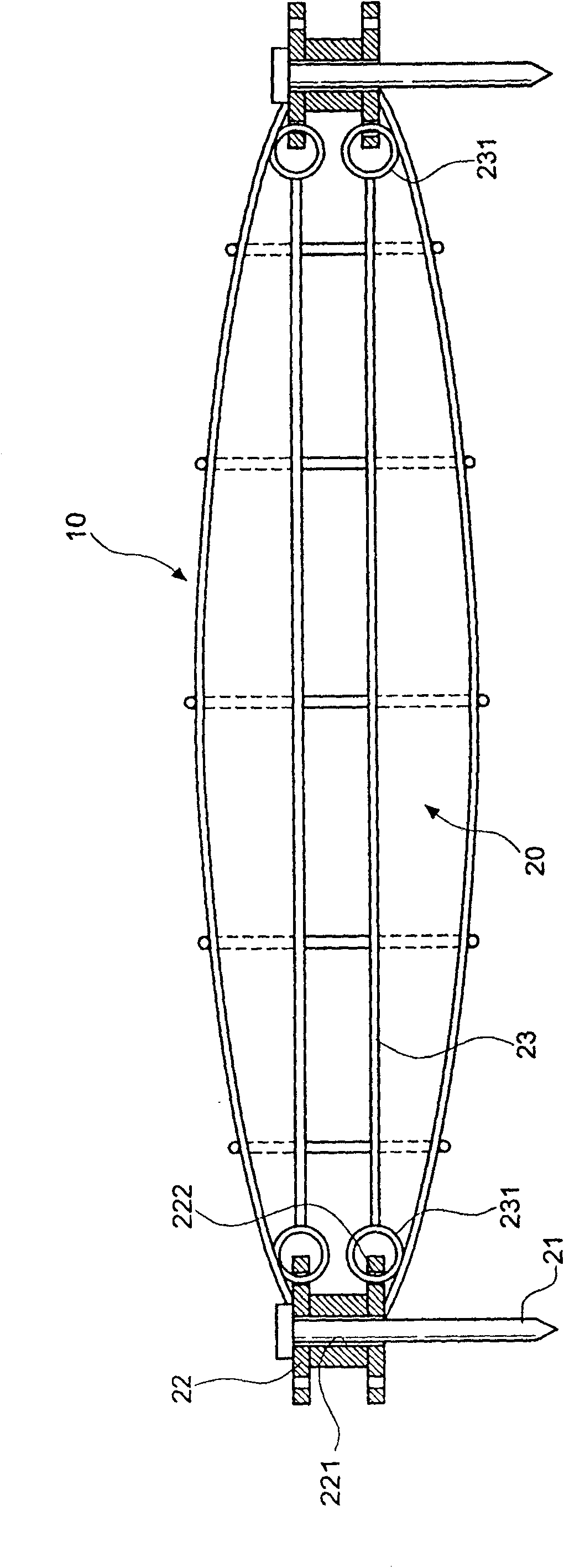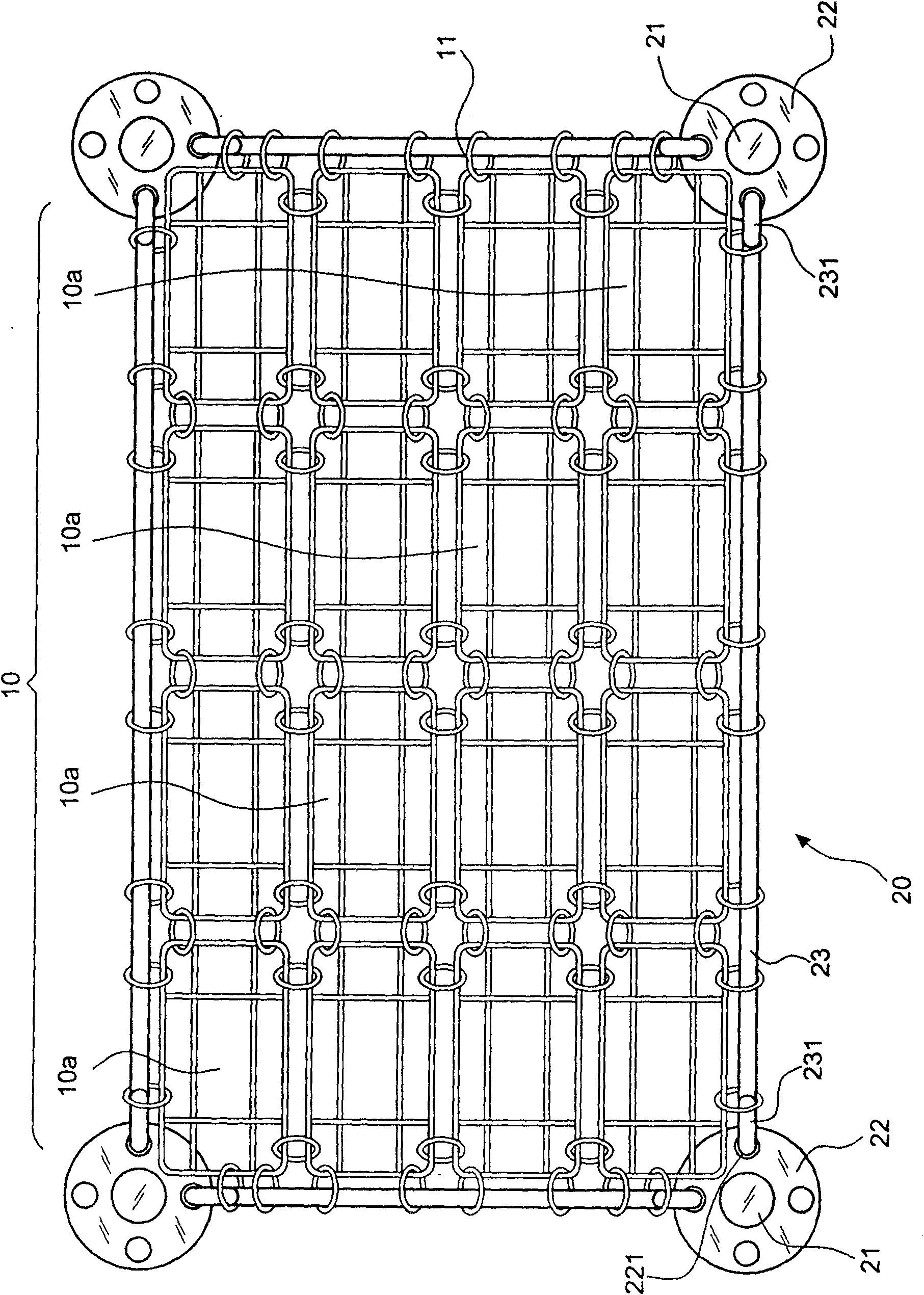Soil and water conservation method
A technology of fertile soil and planting net, applied in soil protection, excavation, construction, etc., can solve the problems of difficulty in setting up bamboo and wood piles, increased workload, and large slope restrictions, so as to avoid erosion, concentrate water flow, and accelerate Construction speed, reduce the effect of coordination work
- Summary
- Abstract
- Description
- Claims
- Application Information
AI Technical Summary
Problems solved by technology
Method used
Image
Examples
Embodiment Construction
[0031] The water and soil conservation method of the present invention comprises a planting net body and a flexible skeleton supporting the anchor. The planting net body is a hollow three-dimensional bag, which is the main body of the plant, that is, the hollow part of the three-dimensional bag is filled with plant seeds. The fertile soil and various plants that have been cultivated are planted on the top of the hole. The flexible skeleton is a stable support for the planting net, so that the plants in the net can grow in a stable environment, and the net will also give a certain degree of stability to the slope. For protection, the combination of the two methods can be jointly produced and combined, separately produced and recombined, or combined in a mixed way. As for the method to be used, it depends on the object of use, such as hillsides, structures or river banks. object.
[0032] Vegetation mesh body is a complex composed of mesh layers, and its geometric shape can be c...
PUM
 Login to View More
Login to View More Abstract
Description
Claims
Application Information
 Login to View More
Login to View More - R&D
- Intellectual Property
- Life Sciences
- Materials
- Tech Scout
- Unparalleled Data Quality
- Higher Quality Content
- 60% Fewer Hallucinations
Browse by: Latest US Patents, China's latest patents, Technical Efficacy Thesaurus, Application Domain, Technology Topic, Popular Technical Reports.
© 2025 PatSnap. All rights reserved.Legal|Privacy policy|Modern Slavery Act Transparency Statement|Sitemap|About US| Contact US: help@patsnap.com



